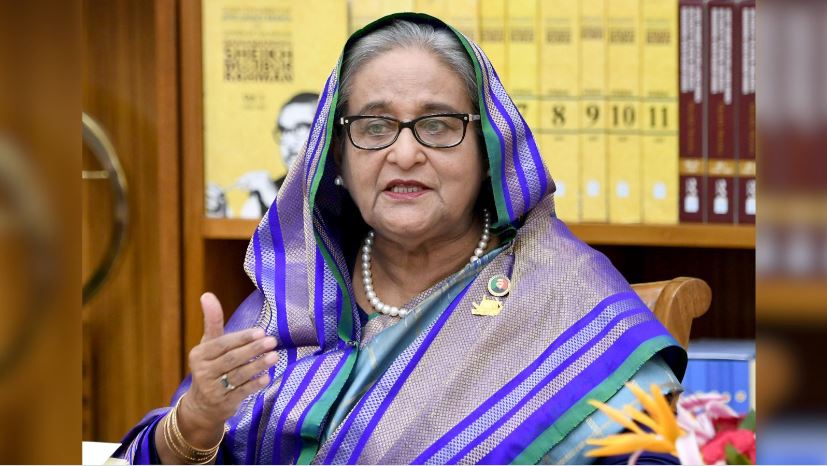Introduction: Resurgence of Stability in Bangladesh Post-Protests
On July 29, 2024, Bangladesh reestablished its internet services following the conclusion of intense student protests over job quota reforms. The nationwide demonstrations, which erupted in response to controversial government policies, had led to significant disruptions, including a nationwide internet blackout, curfews, and a military presence in key areas.
Restoration of Internet Services and Return to Normalcy
Following a period of severe unrest, the Bangladeshi government announced the full restoration of broadband and mobile internet services. This move marks a significant step towards normalcy after a tumultuous month characterized by student protests against job quota reforms. The foreign ministry’s statement emphasized that all forms of communication, including land-based and mobile telephony, remained operational throughout the crisis, even as internet access was initially suspended to control the situation.
The government assured international observers that the situation was stabilizing due to the “timely and appropriate measures” implemented. This restoration is seen as a pivotal moment in the country’s attempt to regain stability and address the underlying issues that led to the widespread unrest.
The Nature and Impact of the Protests
The student protests began in June 2024, triggered by a high court’s directive to reinstate job quotas for government positions, including those for veterans of the 1971 independence war from Pakistan. The move was met with widespread opposition from students who viewed the quotas as an impediment to merit-based job selection.
The protests quickly escalated into a nationwide movement, with thousands of students taking to the streets. The government’s response involved deploying security forces, who used rubber bullets, tear gas, and sound grenades to disperse crowds. This heavy-handed approach resulted in numerous injuries and fatalities, with reports estimating nearly 150 deaths during the unrest.
The violence and ensuing curfew were accompanied by a temporary internet suspension aimed at curbing the spread of information and coordinating protest activities. This strategy, however, drew criticism from international bodies, including the United Nations, which condemned the use of force and urged Bangladesh to respect the right to peaceful protest.
Resolution and Government Response
The turning point came on July 21, when the Supreme Court ruled to significantly reduce the job quotas, allowing merit-based selection for 93% of government positions. This decision was seen as a major concession to the protesters’ demands and led to the cessation of demonstrations.
Student leaders, who had initially driven the protests, agreed to suspend their agitation following the court’s ruling. Student coordinator Nahid Islam, in a video message, expressed satisfaction with the resolution and called for the reopening of educational institutions. He also addressed the recent reports of student protesters being detained by the police, which authorities claimed was a measure to ensure their security.
Criticism and Political Context
The response to the protests has sparked criticism of Prime Minister Sheikh Hasina’s government. Critics have accused Hasina of increasing authoritarianism during her 15 years in power, citing instances of mass arrests, forced disappearances, and extrajudicial killings. The government, however, denies these allegations and attributes the unrest to opposition groups, specifically the Bangladesh Nationalist Party (BNP) and the Jamaat-e-Islami party, which have been accused of inciting violence.
The resolution of the job quota protests highlights the complex interplay between student activism, government policy, and political opposition. As Bangladesh navigates these challenges, the restoration of internet services and the cessation of protests mark a significant step towards addressing the grievances of students and stabilizing the nation’s political environment.
Conclusion: Moving Forward from Unrest
The recent events in Bangladesh underscore the volatile nature of political and social activism within the country. As internet services are restored and normalcy returns, the focus shifts to the implications of the Supreme Court’s ruling and its impact on future governance and public policy. The resolution of the job quota protests may serve as a precedent for how the government handles similar challenges, balancing public dissent with political stability.
The restoration of internet access and the end of protests signify a return to normalcy, yet the underlying issues of political discontent and demands for reform remain pertinent. As Bangladesh moves forward, the lessons from this episode will likely influence both domestic policies and international perceptions of the country’s approach to managing civil unrest and political activism.
Key Learning Points:
| Key Learning Points | Explanation |
|---|---|
| Restoration of Internet Services | The reestablishment of internet access marks a return to stability after widespread disruptions caused by student protests. |
| Escalation and Resolution of Protests | Protests over job quotas escalated into a nationwide movement, resulting in significant casualties and government measures before being resolved by a Supreme Court ruling. |
| Government and International Criticism | The government’s response to the protests drew criticism from international bodies, highlighting concerns about human rights and authoritarian practices. |
Soumya Smruti Sahoo is a seasoned journalist with extensive experience in both international and Indian news writing. With a sharp analytical mind and a dedication to uncovering the truth, Soumya has built a reputation for delivering in-depth, well-researched articles that provide readers with a clear understanding of complex global and domestic issues. Her work reflects a deep commitment to journalistic integrity, making her a trusted source for accurate and insightful news coverage.



